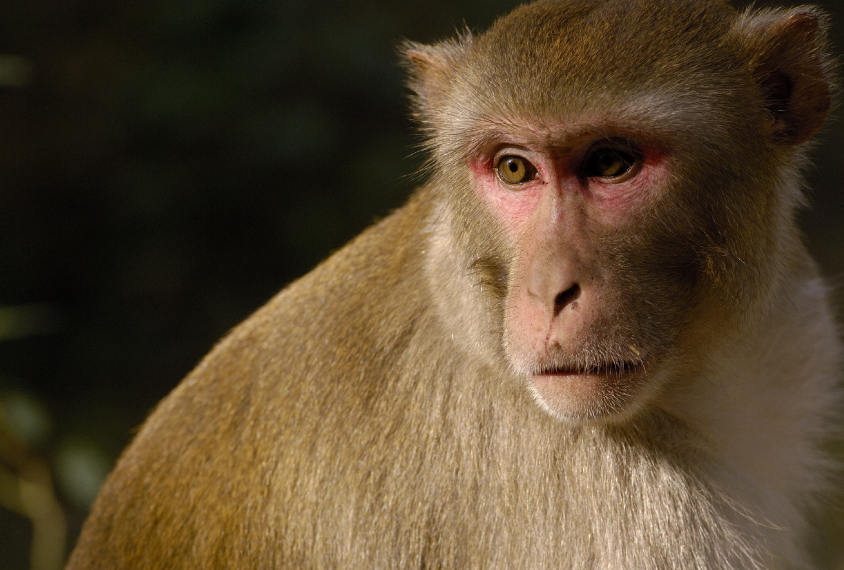
Pete Oxford / Minden Pictures
THIS ARTICLE IS MORE THAN FIVE YEARS OLD
This article is more than five years old. Autism research — and science in general — is constantly evolving, so older articles may contain information or theories that have been reevaluated since their original publication date.
Monkeys with multiple copies of the gene MeCP2 have irregular brain waves similar to those seen in some children with autism. The unpublished results were presented yesterday at the 2016 Society for Neuroscience annual meeting in San Diego.
Low activity of a certain type of brain wave, called alpha oscillations, tracks with the time these monkeys spend circling their cage.
The findings offer clues about the neural basis of repetitive behaviors, a core feature of autism, says Zilong Qiu, principal investigator in the Institute of Neuroscience at the Chinese Academy of Sciences in Shanghai, who presented the work.
MeCP2 is mutated in Rett syndrome, a rare condition marked by cognitive problems, seizures and, often, autism. People with one extra copy of the gene have MeCP2 duplication syndrome, a condition characterized by intellectual disability, anxiety, seizures and autism.
Qiu and his colleagues used a virus to engineer rhesus macaques with up to five extra copies of MeCP2.
In January, the researchers reported that the MeCP2 monkeys have autism-like features. They spend less time interacting with other monkeys and more time circling their cages. The findings, published in Nature, drew skepticism from scientists who said the monkeys do not show key features of MeCP2 duplication syndrome, such as seizures and cognitive problems.
Still, Qiu says the monkeys can help researchers understand the mechanisms underlying Rett syndrome and autism. “We’d like to understand what are the pathological circuits in transgenic monkeys,” he says. After that, “we want to understand the relationship to the phenotype, or behavior.”
Catching waves:
Qiu and his colleagues used electroencephalography to probe brain activity in 5 monkeys with excess MeCP2 and 11 controls. All of the monkeys were around 3 years old at the time of the experiment (they are now 5) and anesthetized.
The monkeys show less alpha oscillation activity than controls do. The lower the activity of these brain waves, the more time the animals spend circling their cages. This suggests that a decrease in the activity may lead to repetitive behaviors in autism.
The MeCP2 monkeys also show high activity of spontaneous high-frequency brain waves, called gamma oscillations, compared with controls, the researchers found. Previous studies have shown an increase in this type of activity among children with autism.
The researchers are using functional magnetic resonance imaging to investigate the link between brain activity and repetitive behaviors. They plan to perform similar experiments in the babies of these monkeys that have inherited the extra copies of MeCP2.
For more reports from the 2016 Society for Neuroscience annual meeting, please click here.
By joining the discussion, you agree to our privacy policy.